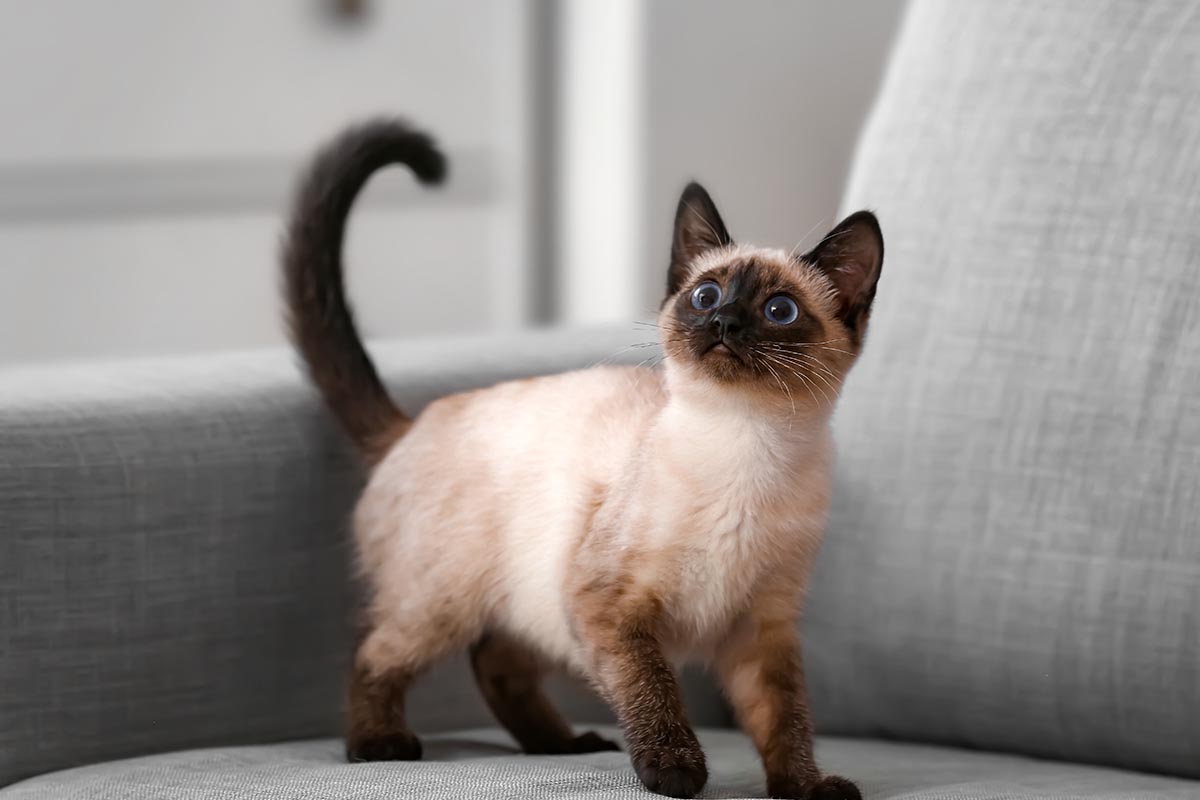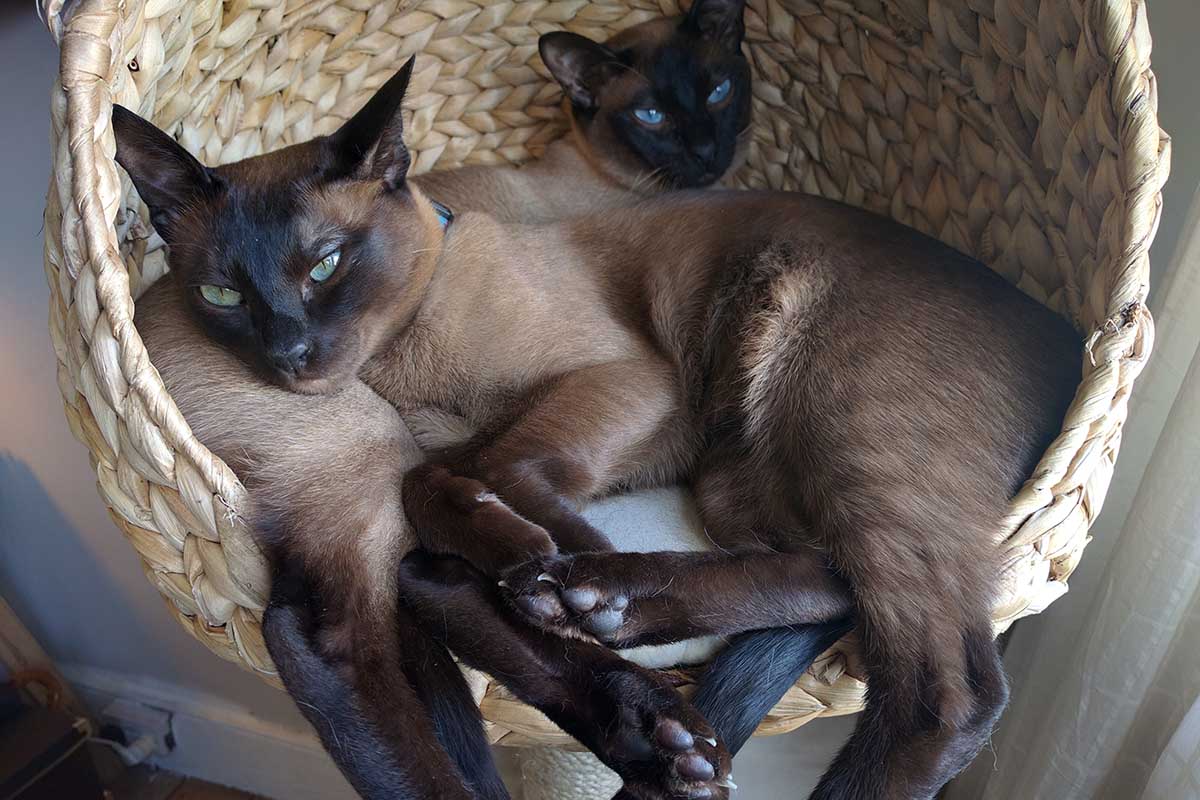Why Is My Siamese Cat So Chatty? A Real Guide to Understanding Their Meows, Moods & Messages
Key Points
Siamese Cats Meow More Because They’re Smart & Social. Their meows are real communication. They need attention, not just food or space.
Body Language and Meow Tone Must Be Read Together. Use timing, context, and posture to understand what your cat wants.
Boredom = Noise. If your cat’s meowing nonstop, enrich their world—don’t just shut the door.
Last week, a friend called me at 9:30 PM.
I swear, my cat just yelled at me!
She said, half laughing, half stressed. Her Siamese, Luna, had been meowing nonstop for hours—and she had no idea why.
If you’re the proud human of a Siamese cat, you probably know this scenario all too well.
Siamese cats are more than just beautiful—they’re expressive, bold, and full of vocal personality. They don’t just “meow.”
They communicate. Think of them as the extroverts of the feline world. Their voices are loud, emotional, and often relentless.
In fact, according to a study on feline communication, Siamese cats are among the most vocal domestic breeds—and not without reason.
Their Siamese cat meow isn’t background noise; it’s how they talk to you.
They’re smart, emotionally intuitive, and deeply bonded with their humans.
And if you’re not yet fluent in “Siamese,” don’t worry—I’ve got you.
In this guide, I’ll walk you through how to decode those iconic Siamese cat meows using real-life cues, body language tips, research-backed insights, and even a few celeb cat-lovers who get it.
By the end, you’ll better understand what your chatty cat is really trying to say—and how to respond in a way that makes your bond even stronger.
Why Are Siamese Cats So Vocal?
Let’s start here: not all cats are created equal when it comes to chattiness.
According to researchers from Lund University, domestic cats have developed their vocal style to match human interaction. In short?
They’re meowing for us—not other cats. Siamese cats, specifically, have been bred for companionship.
That means more eye contact, more bonding—and more talking.
They’re also naturally intelligent. VetStreet.com lists Siamese cats in the top 5 most intelligent cat breeds. Smart animals get bored easily—and when they do, they talk about it.
Even celebrities have taken notice. Taylor Swift’s cats may not be Siamese, but actor Elizabeth Taylor famously adored her Siamese, and Marilyn Monroe’s pet cat “Mitsu” was a Siamese too.
Decode the Tone: What That Meow Really Means
Not all meows are equal. Learning to distinguish them is the first step to connecting with your cat.
High-pitched, repetitive meows = “Feed me!” or “Where are you?!”
Drawn-out, loud meows = Frustration or a demand
Soft, chirpy meows = Greeting or light communication
Growling or hissing = Fear, stress, or territorial behavior
Purring with meows = Contentment, though sometimes a purr can mask anxiety
️ ✅Helpful Tip: Record your cat’s meows throughout the day using your phone. Play them back and note what was happening during each sound. Over time, you’ll recognize a pattern.
Body Language + Timing = Clarity
Meows are just one part of the story. You’ll get much closer to the truth when you pair vocal sounds with body language and timing.
Here’s what to look for:
Tail straight up + excited meows = Your cat’s in a good mood and wants your attention
Meowing while pacing near the door = Wants to go outside or needs a change of environment
Crouching + low growl = Defensive, possibly in pain or fear
Rolls onto back + chirps = Playtime invitation
When your cat meows also matters:
In the morning? Likely hunger or attention-seeking;
In the evening after work? They missed you!
Random bursts at night? Possibly boredom or pent-up energy.
✅ Real-world pain point: Many owners misinterpret excessive vocalization as “annoying” when it’s actually boredom or anxiety. Siamese cats need engagement, or they’ll speak louder.
Enrichment Is Everything for a Siamese
Because of their high intelligence and emotional sensitivity, Siamese cats need mental stimulation. Lack of it is one of the biggest reasons for excessive meowing.
Try:
Puzzle feeders;
Interactive toys (laser pointers, feather wands;)
Cat shelves for climbing;
Scheduled play sessions.
✅ Expert Note: Feline behaviorist Jackson Galaxy recommends structured play twice a day for intelligent breeds like Siamese. “If you don’t give them a job, they’ll create one—and you won’t like it,” he says.
Keep a “Meow Journal” to Learn Your Cat’s Language
This one may sound a little extra, but it works—especially if you’re struggling to decode your cat’s vocal patterns.
Write down:
Time of day;
What your cat was doing;
Description of the meow;
Your response;
Outcome (Did they eat? Go outside? Calm down?)
After a week, you’ll start to see real behavioral trends—and a clearer understanding of your Siamese’s “language.”
Popular Catfluencers Who Love Vocal Breeds
Let’s be real—some of us learn best through scrolling. Here are a few famous pet accounts where Siamese and chatty breeds take center stage:
@Sukiicat – A travel-loving Bengal/Siamese mix who “talks” to her human regularly
@hosico_cat – Not Siamese, but shows how expressive felines can go viral
@realgrumpycat (archived) – While not chatty, her facial expressions taught us everything about feline emotion
If they can learn the language of cat… so can you.
Final Thoughts: Siamese Cat
Understanding your Siamese cat’s meow isn’t just about being a good pet parent—it’s about building a relationship.
This breed is wired for connection. When they meow, they’re not just making noise. They’re reaching out.
So next time your Siamese starts a conversation, don’t brush it off. Listen. Learn. Engage.
Because in the world of cats, especially the vocal Siamese, every “meow” is a message waiting to be heard.
Several books are published on understanding cat behavior and articles that you can leverage to better connect with your pet.





















